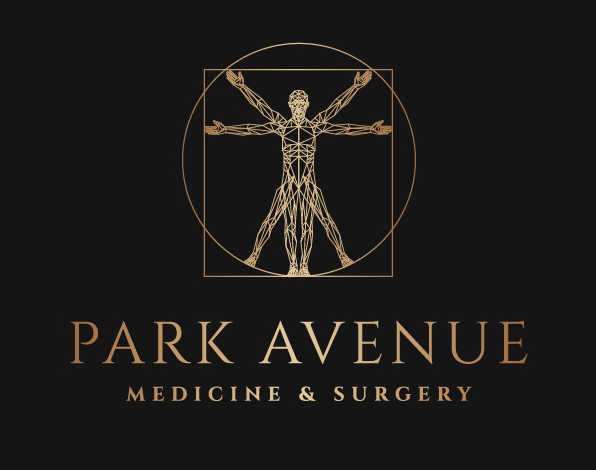10 Body Parts Grown in Lab: Stem Cell Research Applications
Organ transplants are some of the most dangerous procedures to date. Requiring a long wait time and heavy medication, many are sadly unable to get the treatment they need. Research into the production of artificial organs through the use of stem cells, however, may soon put an end to this problem. By artificially growing organs from a patient’s own stem cells (“blank-slate” cells that can be turned into any type of tissue), the long and deadly wait for replacement organs may soon be over for many.
1. Human Skin
Skin was once of the first organic tissue to be created artificially, in part due to its relatively simple structure. By simply incubating a line of skin cells within cell growth medium, patches of skin can be grown in a manner similar to ordinary bacteria. This artificial skin is vital to treating severe burns and other permanent injuries to one’s skin.
2. Trachea
The trachea is produced by first producing a replica of the patient’s original trachea. This replica is made out of collagen, which is used as a scaffold for the patient’s cells to grow on. Cells from the patient are then harvested and cultivated, before being placed on the scaffold and allowed to grow. As the cells grow, the collagen will break down with negligible effects on the overall structure of the organ.
3. Liver
Researchers at Cedars-Sinai are currently attempting to produce an artificial liver that can be used to treat liver failure. The organ works by taking in blood from the patient’s central venous line, and then filtering it into four foot-long tubes. These tubes are embedded with artificially produced liver cells, which perform the same functions as the normal human liver. The processed blood is then returned to the patient through the central line.
4. Kidney
The “Kidney Project” is a joint-research endeavor by the University of California and the Cleveland Clinic to create a bio-artificial kidney. This kidney works by first drawing waste particles and other molecules through a silicon membrane. The waste then enters a bioreactor, containing live kidney cells which send water and salts from the waste back into the bloodstream. The wastes are then drained directly into the bladder as urine.
5. Heart
Similar to artificial tracheas, artificial heart valves are first crafted out of collagen, which acts as a scaffold on which the patient’s own cells can grow. The patient’s cells are collected, cultivated, and are allowed to grow on the scaffolding, eventually breaking down and replacing the collagen and leaving a new heart valve.
6. Urinary Bladder
A new procedure created by Dr. Joseph A. Smith and Professor William A. Bray is able to create a new bladder from the patient’s own intestines. The procedure involves the removing 35-40 inches of the patient’s small intestine, and shaping this tissue into a sphere. This artificial bladder is then connected to the patient’s kidneys and urethra, allowing it to function as a normal bladder.
7. Ear
Researchers at Cornell University have recently found a way to create an artificial ear from a patient’s own cells using 3D printing. First, a 3D model of the patient’s ear is digitally produced. This model is used to 3D print a mold, which collagen is then injected into. This creates a biological scaffold onto which cells harvested from the patient can grow, eventually taking the shape of a human ear.
8. Cartilage
Research headed by Jennifer Elisseeff has led to the development of a technique which uses engineered cells to replace lost cartilage in a patient’s joints. This treatment involves injecting a light-sensitive polymer solution carrying a payload of engineered cells and nutrients directly under the skin. Exposure to ultraviolet light will cause the polymer to harden into a gel-like scaffold, on which the engineered cells will safely be able to grow.
9. Bone
Researcher Ramille N. Shah has developed substance which stimulates rapid regeneration in bones. This substance is a mixture of hydroxyapatite (a calcium-based mineral found in human bones) and a specially designed biodegradable polymer commonly used in sutures. This mixture is used to 3D print a biological scaffolding, onto which bone tissue will naturally grow.
10. Lungs
Researchers from the University of Michigan Medical School have recently developed a potential way of growing lung tissue in a lab. This was done by first creating a small tube out of a biodegradable material called PLG, filling it with stem cells, and attaching it to a lab mouse for eight weeks. Afterwards, the tube was recovered and was found to have been filled with lung tissue, which appeared to have developed tube-shaped airway structures similar to those found in adult lungs.
Citations:
“Can We Grow Replacement Organs? A Survey of Current Literature.” Can We Grow Replacement Organs? A Survey of Current Literature | The People, Ideas, and Things (PIT) Journal, pitjournal.unc.edu/article/can-we-grow-replacement-organs-survey-current-literature. Office, Anne Trafton MIT News.
“Tissue Engineering: Growing New Organs, and More.” MIT News, 14 Dec. 2012, news.mit.edu/2012/engineering-health-tissue-engineering-growing-organs-1214.
“Understanding the Organ Transplant Waiting List.” Gift of Life Donor Program, www.donors1.org/patient/waitinglist/.
“Custom-Made Body Parts: Advances in Tissue Engineering.” Science in the News, 16 Mar. 2015, sitn.hms.harvard.edu/flash/2012/issue129b/.
“Skin Culture.” Biotech Hobbyist Magazine, www.nyu.edu/projects/xdesign/biotechhobbyist/skin.html. Suzuki , Teruhisa et al. Regeneration of the Trachea Using a Bioengineered Scaffold With Adipose-Derived Stem Cells. Annals Publishing Company, 2008, citeseerx.ist.psu.edu/viewdoc/download?doi=10.1.1.927.3173&rep=rep1&type=pdf.
“Researchers Testing Artificial Liver as Potential Therapy for Patients with Alcohol-Related Organ Failure.” Cedars-Sinai, www.cedars-sinai.edu/About-Us/News/News-Releases-2014/Researchers-Testing-Artificial-Liver-as-Potential-Therapy-for-Patients-with-Alcohol-Related-Organ-Failure.aspx. Posted 24 Jun 2016 | 12:55 GMT By Eliza Strickland.
“Three Ways to Build an Artificial Kidney.” IEEE Spectrum: Technology, Engineering, and Science News, 24 June 2016, spectrum.ieee.org/biomedical/devices/three-ways-to-build-an-artificial-kidney.
Colleen Walsh, Harvard Staff Writer |, et al. “Stem Cells Make New Heart Valves.” Harvard Gazette, 13 Sept. 2007, news.harvard.edu/gazette/story/2007/09/stem-cells-make-new-heart-valves/.
“Procedure Creates New Bladder from Patients' Own Intestines (04/21/00).” Vanderbilt University Medical Center, 21 Apr. 2000, www.mc.vanderbilt.edu/reporter/index.html?ID=1107.20, 2013 February.
“Cornell Chronicle.” Bioengineers, Physicians 3-D Print Ears That Look, Act Real, news.cornell.edu/stories/2013/02/bioengineers-physicians-3-d-print-ears-look-act-real.
Beaudouin, Dave. “BIOENGINEERING A CURE: One Tissue at a Time.” JHU Engineering Magazine, 15 Dec. 2014, engineering.jhu.edu/magazine/2003/09/bioengineering-cure-one-tissue-time/#.Wc1W6WhSw2x.
“Promising Biomaterial to Build Better Bones with 3-D Printing.” Northwestern Engineering, www.mccormick.northwestern.edu/news/articles/2016/09/promising-biomaterial-to-build-better-bones-with-3d-printing.html.
Gabe Cherry Michigan EngineeringJuly 28, 2017. “Lab-Grown Lung Tissue Could Lead to New Cancer, Asthma Treatments.” Michigan Engineering, news.engin.umich.edu/2017/07/lab-grown-lung-tissue-could-lead-to-new-cancer-asthma-treatments/.



